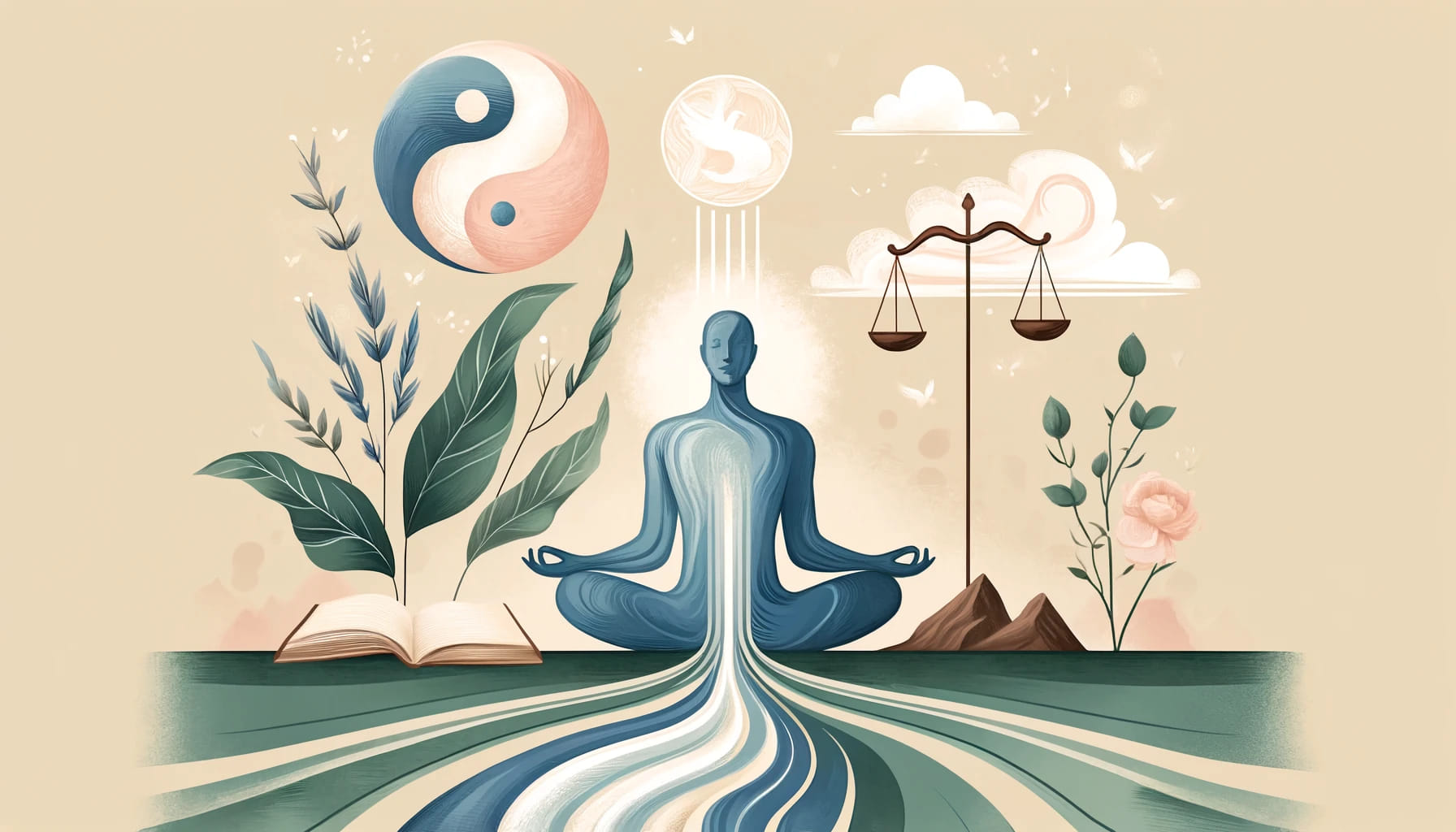The fast-paced demands of modern life often leave little room for inner tranquility. Amid this chaos, both Stoicism and guided meditation offer timeless methods to cultivate inner peace. While Stoicism focuses on rational thought and emotional resilience, meditation enhances mindfulness and self-awareness. Together, they form a powerful practice that grounds the mind and nurtures a sense of calm.
This essay explores the synergy between Stoicism and guided meditation, demonstrating how their combination can lead to greater clarity, emotional balance, and resilience in the face of life’s challenges.
Stoicism and Meditation: Complementary Practices
Stoicism, a philosophy founded in ancient Greece, emphasizes living in harmony with nature, practicing self-discipline, and focusing on what is within one’s control. Guided meditation, rooted in various spiritual and mindfulness traditions, trains the mind to stay present and observe thoughts without judgment.
Though Stoicism and meditation come from different traditions, their goals align: both aim to cultivate a calm, focused mind and a life guided by intention. Marcus Aurelius, in his Meditations, often reflected on his thoughts and emotions—a practice resembling modern mindfulness meditation. This overlap demonstrates that Stoicism and meditation complement each other, amplifying their benefits when practiced together.
Key Stoic Principles Enhanced by Meditation
- The Dichotomy of Control
A cornerstone of Stoicism is distinguishing between what we can and cannot control. Guided meditation reinforces this principle by training the mind to let go of uncontrollable worries. Through focused breathing or visualization, meditation helps us release attachment to outcomes and anchor ourselves in the present moment.For instance, when facing a stressful situation, combining Stoic reasoning with meditative techniques can reduce emotional reactivity and bring clarity. - Mindful Presence
Both Stoicism and meditation emphasize the importance of staying present. Marcus Aurelius advised, “Confine yourself to the present.” Guided meditation enhances this principle by offering structured exercises to focus on the here and now. Techniques such as body scans or breathing exercises encourage mindful awareness, fostering the mental clarity central to Stoic philosophy. - Emotional Regulation
Stoicism teaches that emotions arise from our judgments about events, not the events themselves. Meditation complements this by helping us observe emotions without becoming overwhelmed by them. Guided meditations focused on compassion or acceptance encourage us to acknowledge feelings while maintaining perspective, a practice that aligns with Stoic emotional resilience. - Reflection and Self-Improvement
Daily reflection is a key Stoic practice, often undertaken at the beginning or end of the day. Guided meditation can deepen this habit by providing a structured space for introspection. For example, meditations that encourage gratitude or visualization of virtuous actions align with Stoic principles of self-awareness and moral growth.
Combining Stoicism and Guided Meditation
Integrating Stoic principles with guided meditation creates a holistic approach to mental well-being. Here’s how to combine these practices:
- Morning Intentions
Start your day by reflecting on a Stoic principle, such as the dichotomy of control. Follow this with a short guided meditation to set a calm and focused tone for the day. - Midday Grounding
During stressful moments, pause for a brief meditation centered on deep breathing or letting go of worries. Use Stoic reasoning to remind yourself of what is within your control. - Evening Reflection
End your day with a combination of Stoic journaling and a guided meditation focused on gratitude or self-compassion. Reflect on how your actions aligned with your values and consider improvements for tomorrow.
The Benefits of Stoicism and Meditation
Combining Stoicism and guided meditation offers numerous benefits:
- Enhanced Emotional Balance: Together, they reduce reactivity and promote calmness in stressful situations.
- Greater Focus and Clarity: Meditation deepens the Stoic practice of mindfulness, helping you remain present and intentional.
- Stronger Resilience: Stoic principles, reinforced by meditation, provide tools to navigate challenges with composure.
- Inner Peace: This combined practice fosters a sense of tranquility and purpose, even amid life’s uncertainties.
Conclusion: A Unified Path to Inner Peace
Stoicism and guided meditation, though distinct in origin, share a common goal of cultivating inner peace and resilience. By integrating Stoic principles with meditative practices, individuals can create a balanced approach to life, grounded in rationality and mindfulness.
As Marcus Aurelius wrote, “You have power over your mind—not outside events. Realize this, and you will find strength.” Guided meditation enhances this power, helping us align with Stoic wisdom and approach life with calm, clarity, and purpose.

